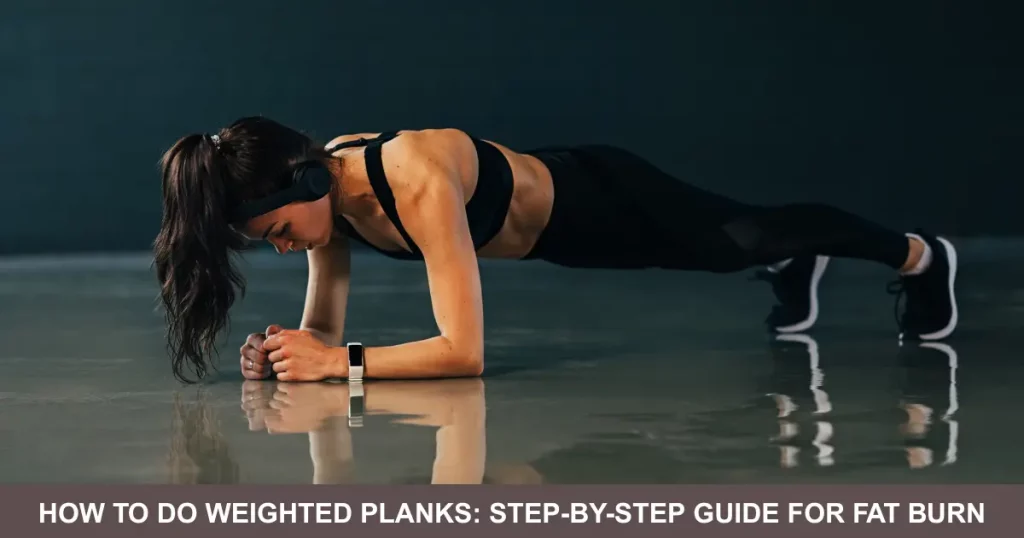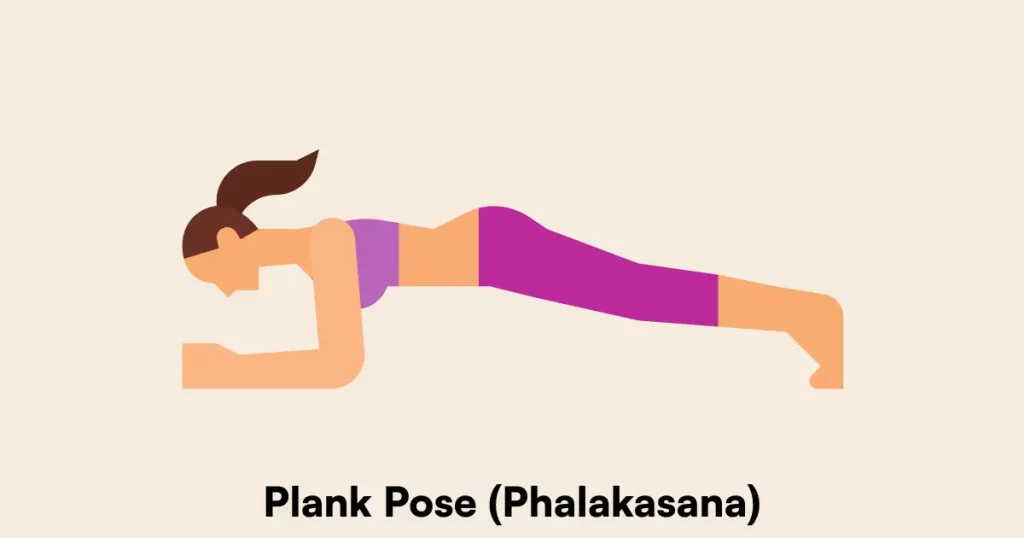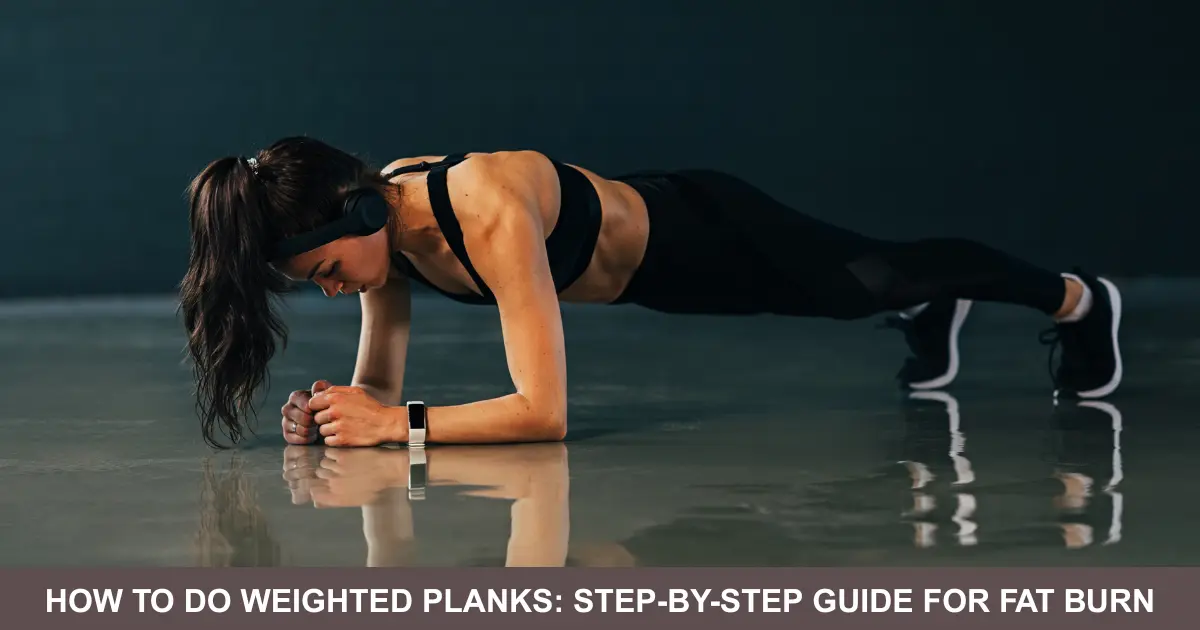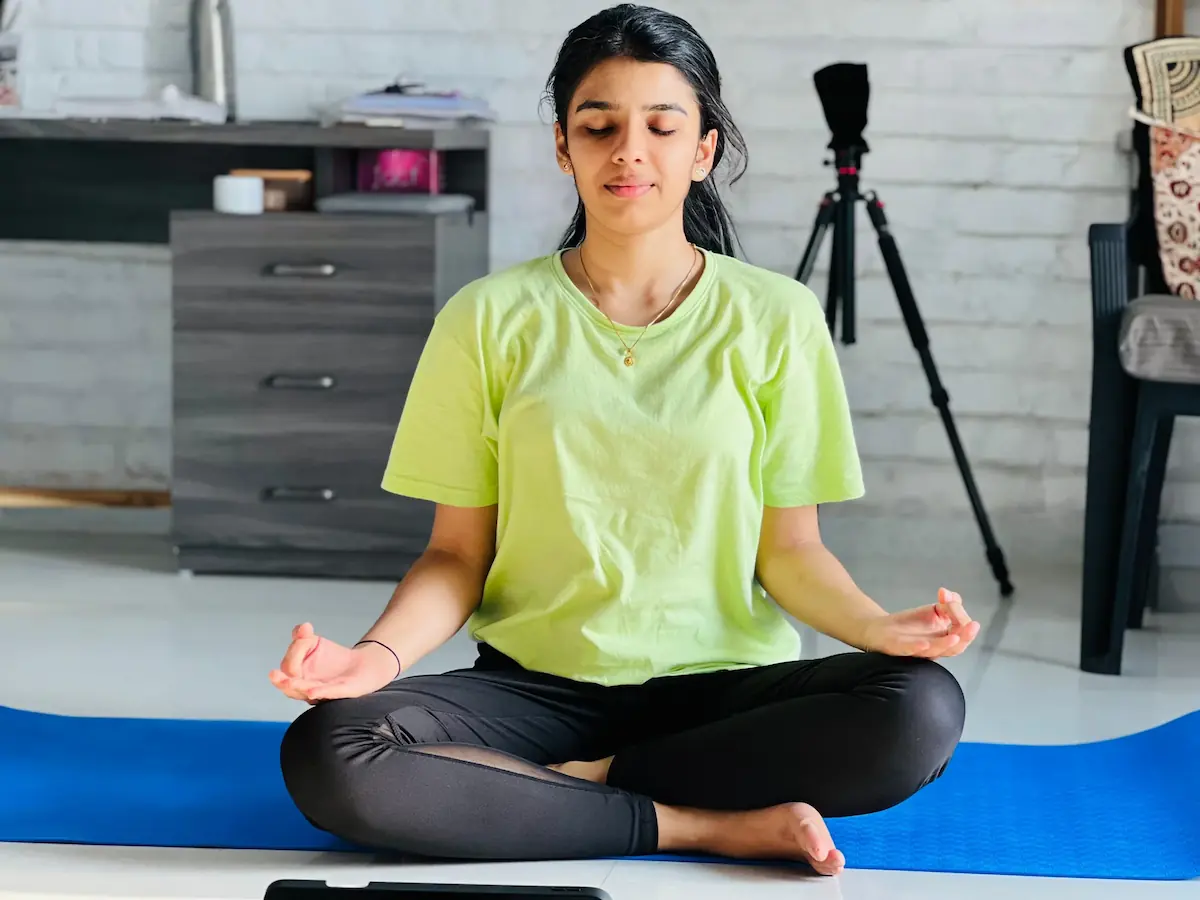Why Try Weighted Planks?
If you’re looking to supercharge your core workouts, weighted planks are a game-changer. They combine the stability challenge of traditional planks with added resistance to burn fat, build muscle, and boost endurance. Whether you’re an intermediate exerciser or a beginner ready to level up, this powerful move can be tailored to suit your fitness level.
Who Can Practice Weighted Planks?
Ideal for:
- Intermediate to advanced fitness enthusiasts
- Anyone looking to build core, arm, and shoulder strength
- Individuals aiming to lose weight or improve muscle definition
Avoid if you:
- Are pregnant
- Have recent back, neck, or shoulder injuries
- Are elderly or have joint instability (consult a physician)

Best Time to Practice
- Early morning or post-warm-up during a workout session
- Avoid doing it on a full stomach
Read More: The Magic Of Balasana: Why Every Yogi Loves Child’s Pose
Step-by-Step Guide to Weighted Planks
Step 1: Start in a Basic Plank
Sanskrit Name: Phalakasana (Plank Pose)
- Begin on all fours, then extend your legs back, supporting your weight on your forearms and toes.
- Keep your body in a straight line from head to heels.
- Breathing Cue: Inhale deeply, engage your core.
Step 2: Position Your Body Correctly
- Elbows should be directly under shoulders.
- Feet hip-width apart for better balance.
- Engage glutes, legs, and abs.
Step 3: Add the Weight
- Ask a partner or trainer to gently place a weight plate (start with 0.5 to 1 kg) on your upper back.
- If alone, wear a weighted vest.
Step 4: Hold the Plank
- Beginners: 10–20 seconds
- Intermediate: 30–45 seconds
- Advanced: 60+ seconds
- Breathing Cue: Exhale slowly and maintain even breathing throughout.
Step 5: Release Gently
- Have your partner remove the weight carefully or unstrap your vest.
- Lower your knees to the ground and rest in Balasana (Child’s Pose) for recovery.

Common Mistakes to Avoid
- Sagging hips or raised buttocks
- Placing weight too low on the back
- Holding your breath
- Using a heavy weight too soon
- Not warming up before the exercise
Benefits of Weighted Planks
- 🔥 Burns Fat: Increases calorie burn through full-body engagement
- 🧱 Builds Core Strength: Activates deep abdominal muscles
- 🧍♂️ Improves Posture: Strengthens spine-supporting muscles
- 🏋️ Boosts Upper Body Endurance: Works shoulders, arms, and glutes
Modifications & Tips for Beginners
- Start with bodyweight planks before adding resistance.
- Use lighter weights (0.5 kg to 1 kg) and increase gradually.
- Place a soft mat under elbows for comfort.
- Perform planks on knees if full planks are too intense initially.
- If you have wrist or shoulder pain, consider using push-up handles or forearm planks instead.
Sample Routine Plan
Weekly Plan (Beginner-Friendly)
- 3 rounds per session
- 3–4 sessions per week
- Hold each plank for 20–30 seconds (increase gradually)
- Rest for 30–60 seconds between rounds
Frequently Asked Questions (FAQs)
Q1: Can I do weighted planks every day?
A: It’s best to give your muscles rest between sessions. Aim for 3–4 times a week with rest days in between.
Q2: What weight should I start with?
A: Beginners should start with 0.5–1 kg and increase slowly as strength improves.
Q3: Are weighted planks better than regular planks?
A: Yes, they add resistance, making muscles work harder for greater strength and fat-burning benefits.
Q4: Is a weighted vest necessary?
A: No, a vest is convenient, but you can also use weight plates with a spotter.
Final Thoughts
Weighted planks offer a simple yet powerful way to transform your core workouts. Start light, stay consistent, and listen to your body. With time, you’ll notice better posture, stronger muscles, and more endurance. Add them to your weekly routine, and feel your fitness elevate!

